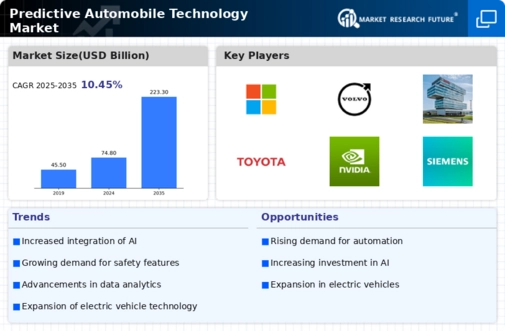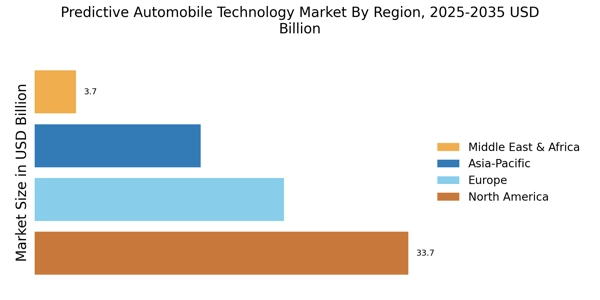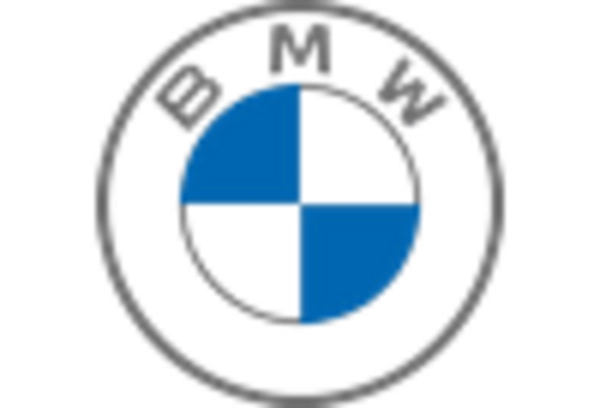The Predictive Automobile Technology Market is currently characterized by a dynamic competitive landscape, driven by rapid advancements in artificial intelligence, machine learning, and data analytics. Key players such as Tesla (US), Waymo (US), and NVIDIA (US) are at the forefront, leveraging their technological prowess to enhance vehicle automation and predictive capabilities. Tesla (US) continues to innovate with its Full Self-Driving (FSD) software, focusing on improving safety and user experience, while Waymo (US) emphasizes its autonomous ride-hailing services, aiming to expand its operational footprint in urban areas. NVIDIA (US) is strategically positioned as a leading provider of AI computing platforms, facilitating the development of advanced driver-assistance systems (ADAS) across various automotive manufacturers. Collectively, these strategies foster a competitive environment that prioritizes technological advancement and user-centric solutions.
In terms of business tactics, companies are increasingly localizing manufacturing to mitigate supply chain disruptions and enhance responsiveness to regional market demands. The competitive structure of the market appears moderately fragmented, with several players vying for market share while also collaborating through partnerships and joint ventures. This collective influence of key players not only drives innovation but also shapes consumer expectations regarding predictive technologies in vehicles.
In August 2025, Tesla (US) announced a partnership with a leading AI research institute to enhance its FSD capabilities. This collaboration aims to integrate cutting-edge machine learning algorithms into Tesla's existing software, potentially improving the accuracy of predictive analytics in real-time driving scenarios. Such strategic moves are likely to solidify Tesla's position as a leader in the predictive automobile technology space, emphasizing its commitment to continuous improvement and innovation.
In September 2025, Waymo (US) expanded its autonomous vehicle testing program to include rural areas, marking a significant shift in its operational strategy. This expansion not only diversifies its testing environments but also indicates a potential move towards offering services in less urbanized regions, which could open new revenue streams. The strategic importance of this initiative lies in its ability to demonstrate the versatility and reliability of autonomous technology across varied driving conditions.
In July 2025, NVIDIA (US) launched a new AI platform specifically designed for automotive applications, aimed at enhancing the predictive capabilities of ADAS. This platform integrates advanced simulation tools that allow manufacturers to test and validate their systems in virtual environments before real-world deployment. The introduction of this technology underscores NVIDIA's role as a critical enabler of innovation within the automotive sector, potentially accelerating the adoption of predictive technologies across the industry.
As of October 2025, current competitive trends in the Predictive Automobile Technology Market are heavily influenced by digitalization, sustainability, and the integration of AI. Strategic alliances among key players are increasingly shaping the landscape, fostering collaboration that enhances technological capabilities and market reach. Looking ahead, competitive differentiation is likely to evolve from traditional price-based competition towards a focus on innovation, technological advancement, and supply chain reliability, as companies strive to meet the growing consumer demand for smarter, safer, and more efficient vehicles.


















Leave a Comment